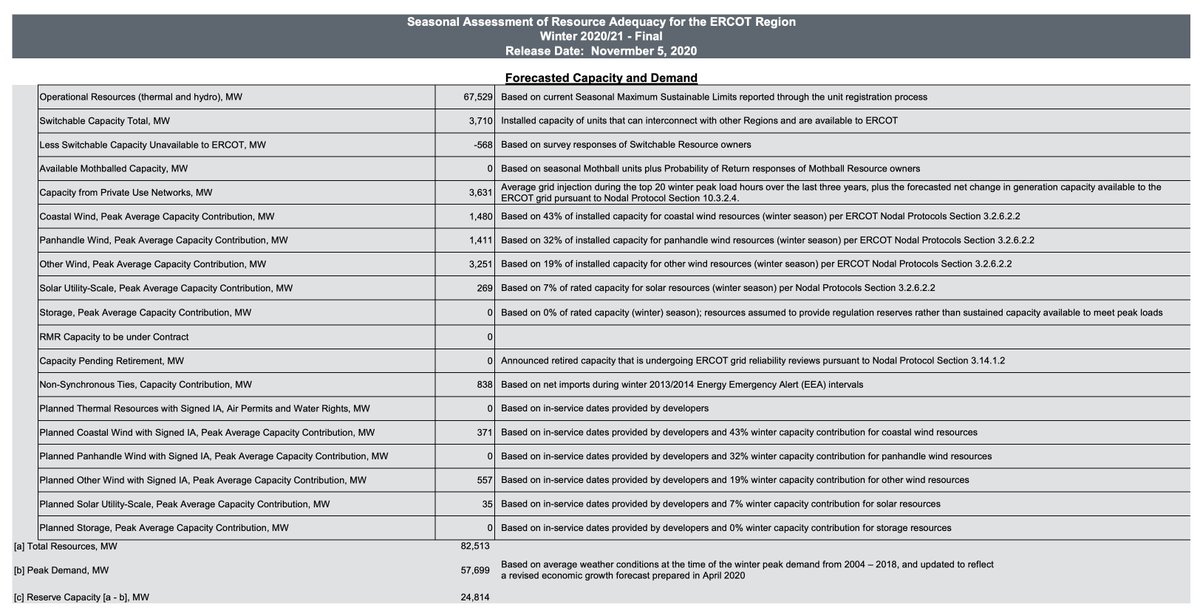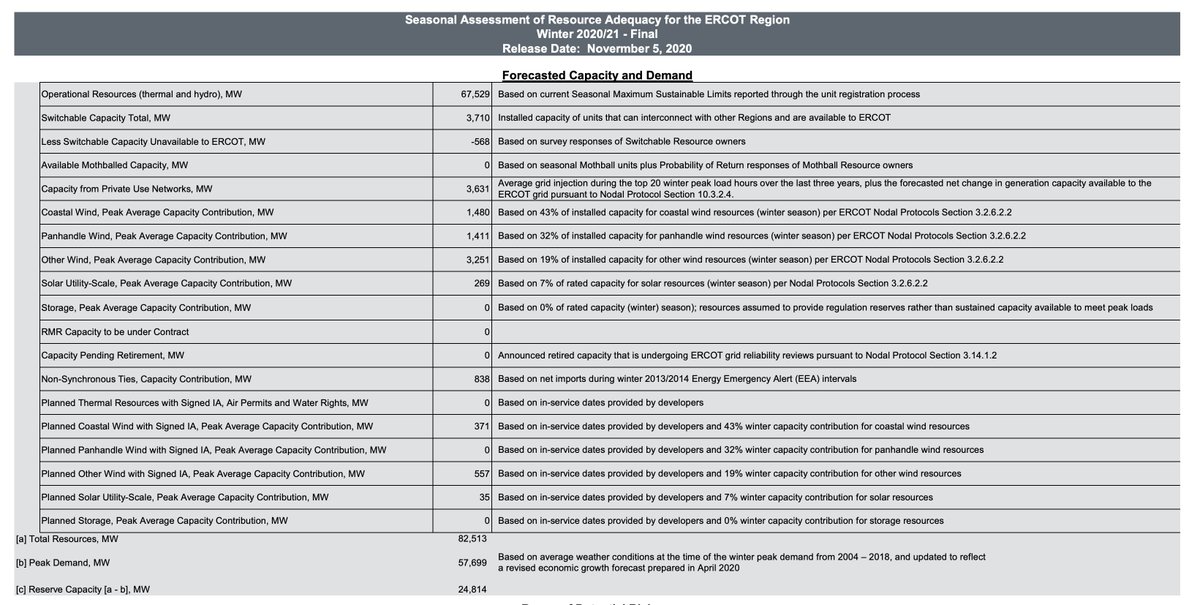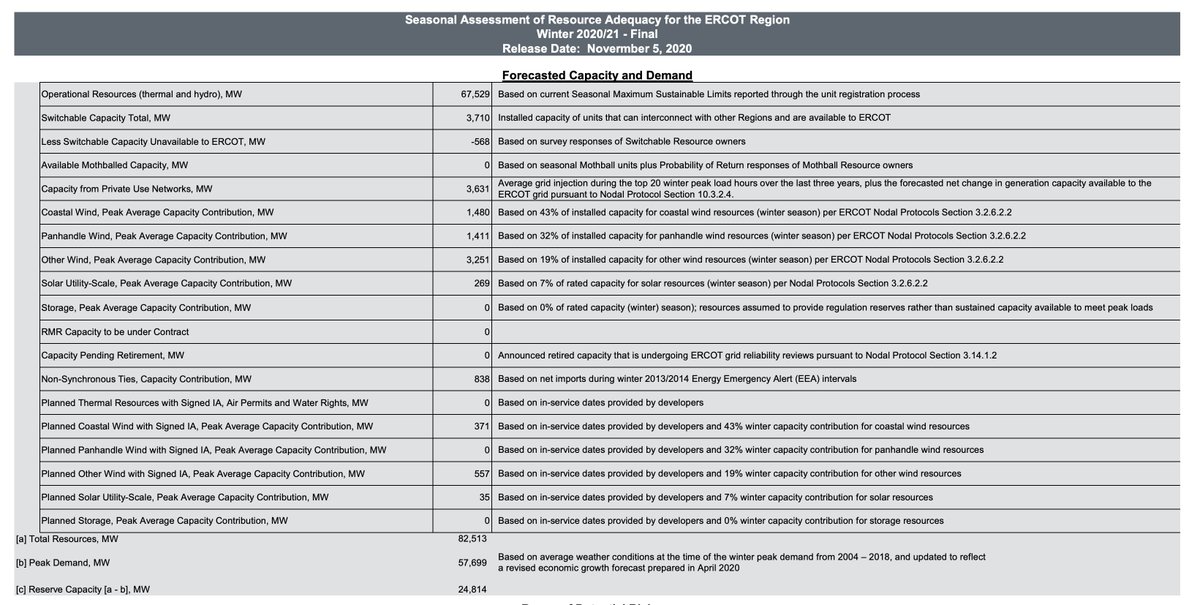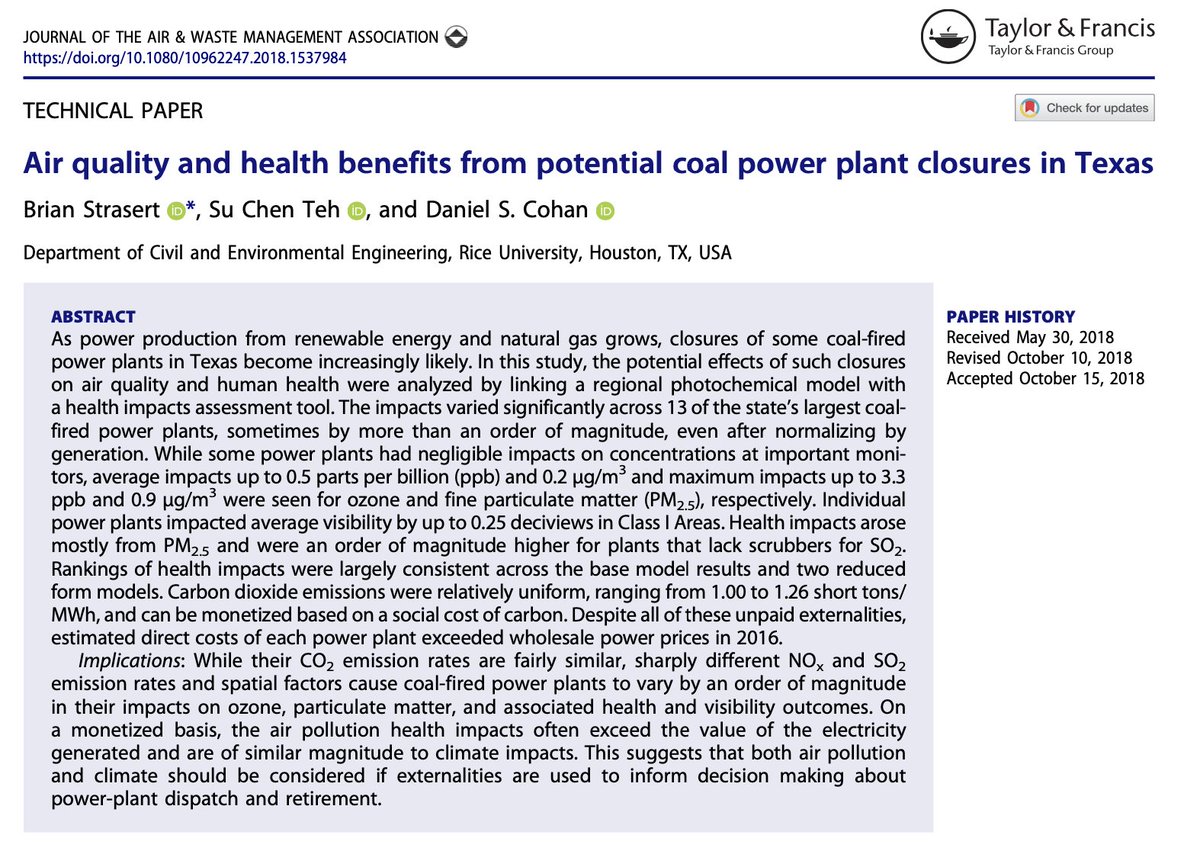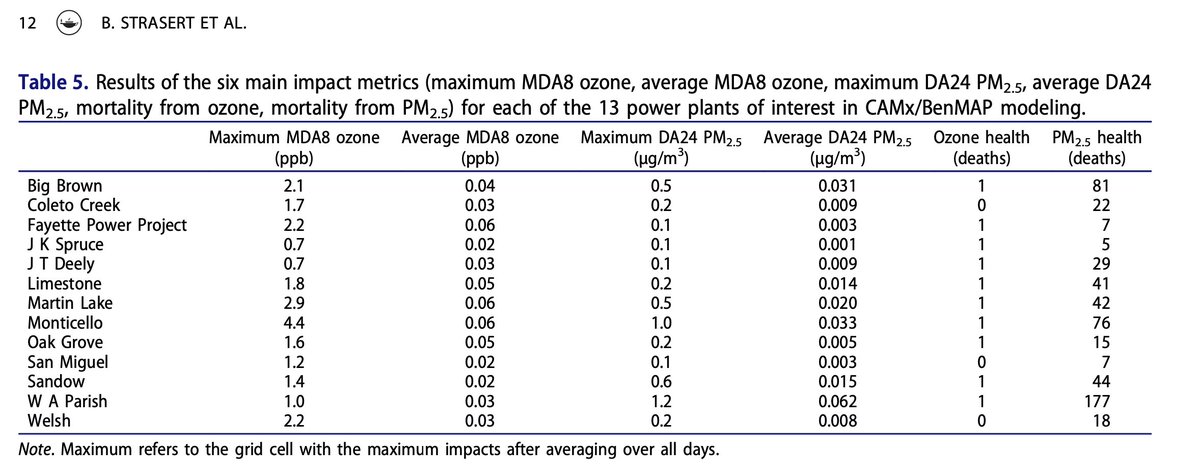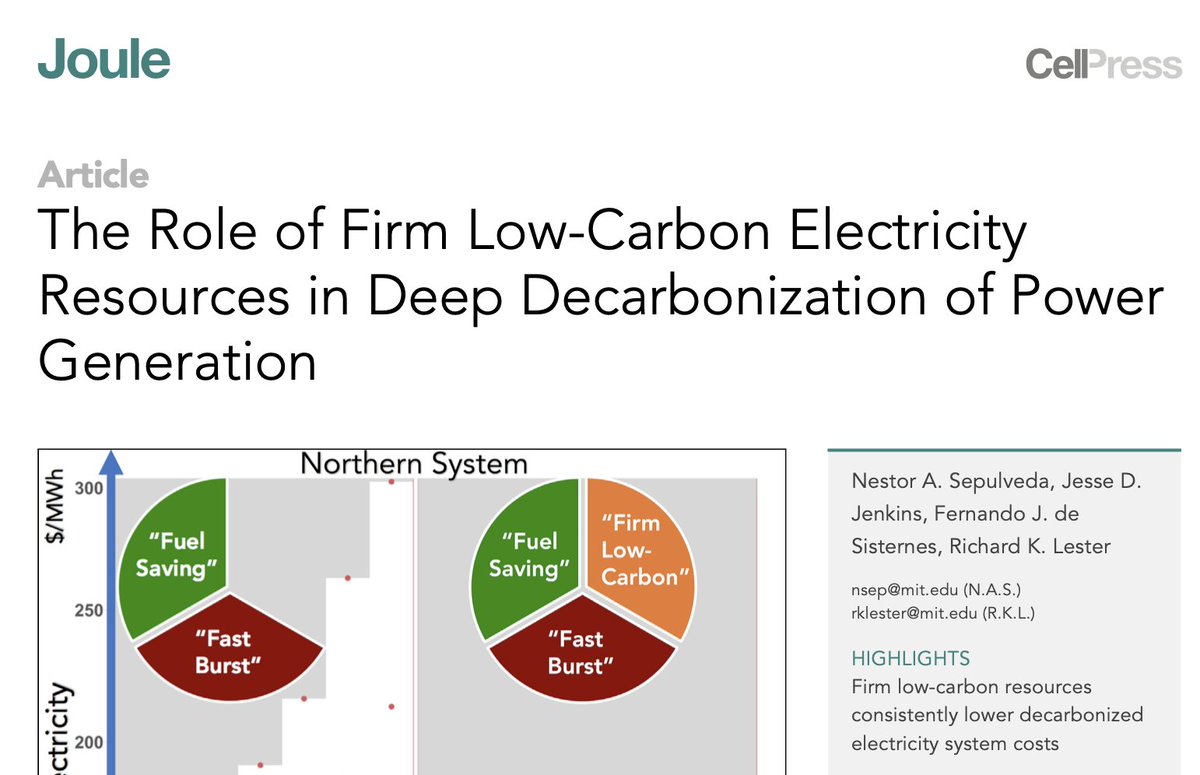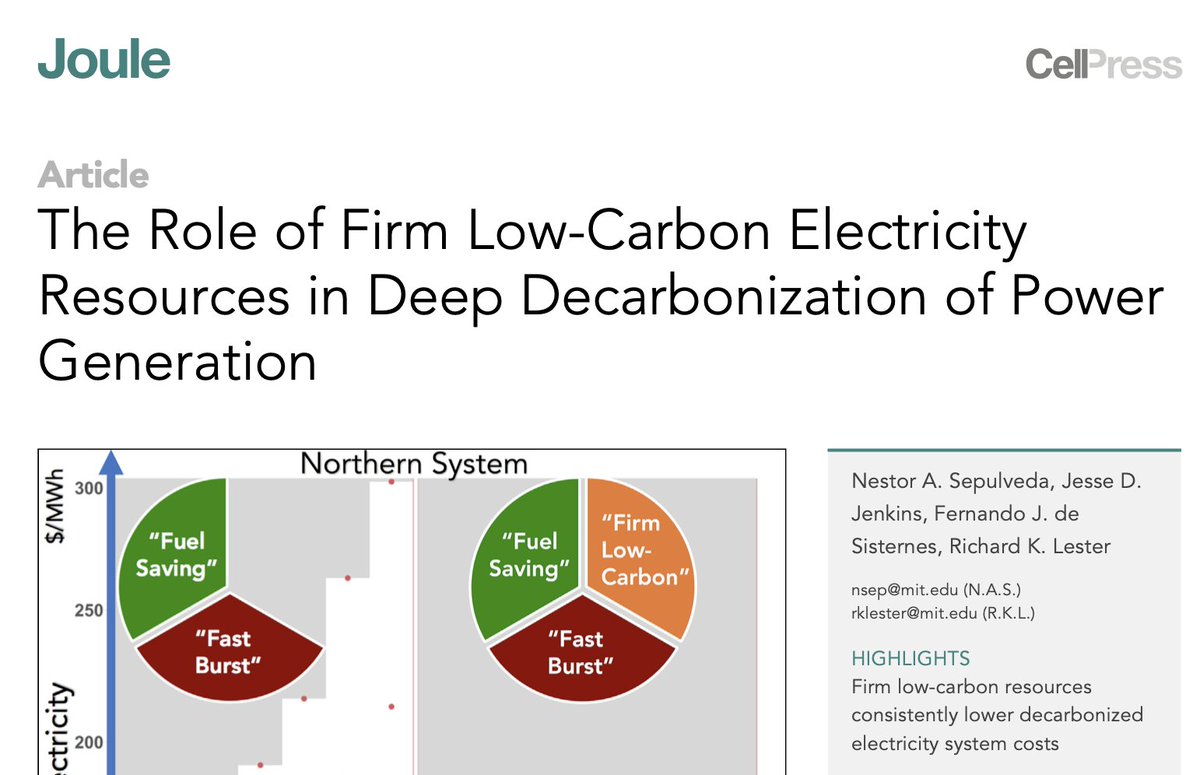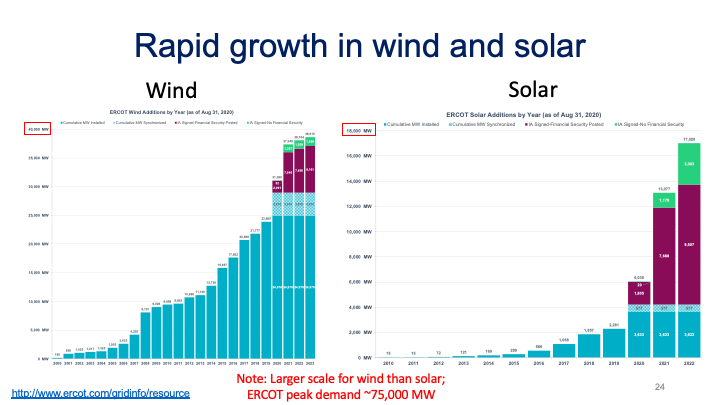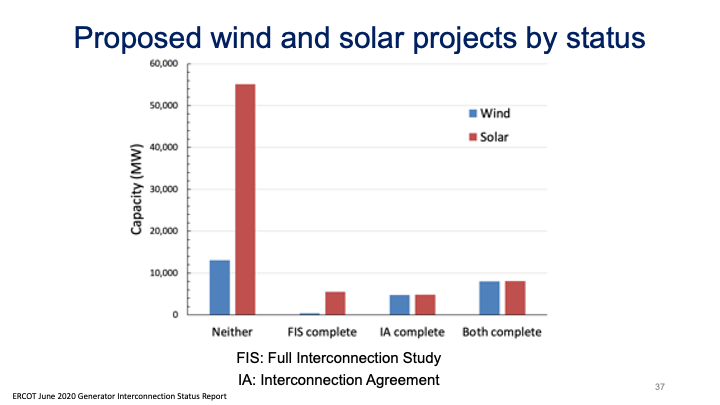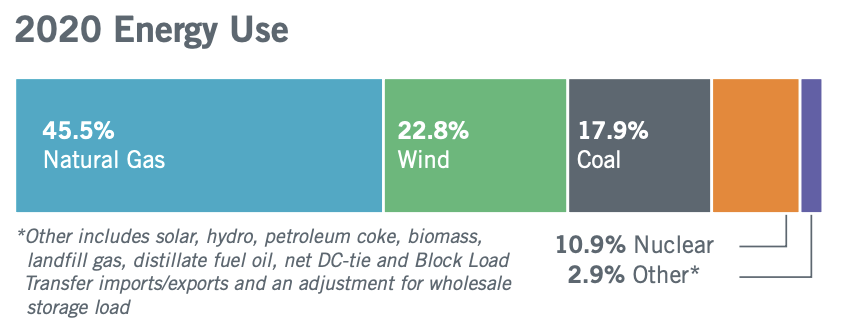Before each season, ERCOT issues a Seasonal Assessment of Resource Adequacy. It's meant to plan for the peak demand expected that season.
Looking more closely at ERCOT's winter peak plan, we see they expected "operational resources" (mostly gas, plus coal, nuclear, and hydro) to provide 67 GW of power. They know it's not always windy or sunny, so they guesstimated 6 GW wind, and <1GW solar.
In a "normal" winter, those "operational resources" would have been enough to supply peak demand, even if there was zero wind and solar. Wind and solar operating at other times reduce emissions and costs and conserve fuels like gas and coal for when we'll need them most.
ERCOT realized not every winter is typical, so it planned for several what-if scenarios and associated potential risks.
Again, all of their estimates are publicly available. http://www.ercot.com/content/wcm/lists/197378/SARA-FinalWinter2020-2021.pdf
Again, all of their estimates are publicly available. http://www.ercot.com/content/wcm/lists/197378/SARA-FinalWinter2020-2021.pdf
In those risk scenarios, we see the typical temptation to refight the last battle. So the planning considered a repeat of the 2011 freeze that last caused rolling blackouts (though for hours, not days). They did have a worse scenario in the last column. https://twitter.com/cohan_ds/status/1362028693833404418?s=20
Even with that imperfect foresight, ERCOT didn't do too badly predicting peak _demand_, with 67 GW in extreme scenario. We don't know what actual peak would have been without these rolling blackouts, but perhaps in the low 70s GW. So maybe a 10%, 7 GW underestimate.
ERCOT also got things about right predicting scheduled maintenance, as plants tune up for summer peak. Why those were allowed to continue, given forecasts of an Arctic blast over a week ahead, deserves investigation. https://twitter.com/cohan_ds/status/1362028693833404418?s=20
Where ERCOT totally missed the situation was in forecasting outages. Actual outages of "firm" resources -- mostly gas, plus a bit of coal and 1 of 4 nuclear reactors that went down -- topped 30 GW, more than double its worst case scenario. https://twitter.com/cohan_ds/status/1362028693833404418?s=20
If Rep. Crenshaw is right, in his otherwise deeply misleading thread, individual power plants didn’t have equipment failures. What failed was the natural gas system in consistently supplying gas at adequate pressure to those power plants. https://twitter.com/cohan_ds/status/1361898982457315328
Politicians aren’t just misleading us in blaming renewables as the leading cause of the Texas blackouts. They’re pretending this is just a power system problem, that ERCOT alone could fix. We’re in an __energy systems __ crisis.
That means that as investigations occur -- as they must, for the worst winter blackouts in Texas history, not just uncomfortable but deadly for too many of my fellow Texans -- we need to look at systemic failures across energy systems, supply & demand, & energy/water nexus too.
Every one of our sources of power supply underperformed. Every one of them is vulnerable to extreme weather and climate events in different ways. None of them were adequately weatherized or prepared for a full realm of weather and conditions.
We also need to realize that this particular event, an Arctic blast stronger than any in 3+ decades, is rare. Climate science is uncertain on the future of extreme freeze events, but on average our winters are getting warmer. Houston gets 5x fewer freezing nights than in 1970s.
So whatever we do to improve our energy systems to prepare for the next freeze, we should prioritize measures that add resilience, as well as affordability, reliability, and environmental sustainability, across the spectrum of typical and extreme conditions.
Those extreme conditions in Texas are more likely to come in the form of heat waves, droughts (our last severe one was 2011, coincidentally the year of the last big freeze), hurricanes, and fires. All of those are being made worse by climate change.
Our power system isn't just failing us in the moment. They're too costly year-round to our $, air, climate, and health. In this paper, we estimated the air pollution, haze, and many 100s of deaths from Texas coal power plants, which emit more CO2, SO2 & NOx than any other state.
We should be thinking of our electricity supply as a team, and a portfolio of resources. Sepulveda and @JesseJenkins provided a nice framing for it here.
We need that team to meet all of our priorities for electricity: affordable, reliable, resilient, and clean. No single player can do it alone. We don't necessarily need all players -- we can phase out coal with time. But we do need a balanced mix.
So how does that framing apply to our Texas power sources? Wind, solar, and hydro are our fuel saving renewables. They operate as much as they can, very affordably, holding down costs & emissions and saving fuel overall. We need more, not less, of them. https://twitter.com/cohan_ds/status/1362023081934417921?s=20
Wind and solar are growing fast. Texas leads the nation in wind MW, though not % of supply. We didn't even crack the top 10 states in solar until recently, yet but are doubling it each year.
We can be adding wind and solar a lot faster. Here's what was in the ERCOT interconnection queue as of June. That would dwarf the solar on the grid today. If we buy into the false narratives of this crisis, many of those projects won't get built.
Again, wind and solar are clean, affordable, fuel saving resources. It's not windy and sunny all the time. They're not meant to be our sole source of power during peak hours. But they save a lot of fuel to be available as so-called "firm" sources when we need them most.
Returning to that overall mix, coal provides 18% of power, falling below wind for last year. It's keeping the lights on for many of us now, while so much gas power is offline. It's also polluting and deadly, as our research has shown. https://twitter.com/cohan_ds/status/1362023081934417921?s=20
TCEQ has allowed some of those coal plants avoid installing SO2 scrubbers, which have been required at all new plants since early 1980s. Its Regional Haze Plan proposes to do zero about it. See criticisms here: herehttps://www.tceq.texas.gov/airquality/sip/bart/haze_sip.html
No company is building a new coal plant in the US, and some Texas coal plants won't even invest to control their SO2 at all. So coal won't be a growing part of the mix, and should be a shrinking share as soon as we can reliably replace its power.
Returning to big picture, the 11% from nuclear is emissions free, and usually a reliable, firm baseload. 1 of Texas' 4 units went down Monday, causing ~1 GW of our shortfall, and suggesting some better preparedness is needed. But overall, reliability is high.
That doesn't mean we'll be adding nuclear anytime soon though. Almost no new nuclear has come online nationwide since the 1970s, and the 4 units that were being constructed nationwide went billions over budget. Two were abandoned, two coming soon, at huge cost.

 Read on Twitter
Read on Twitter